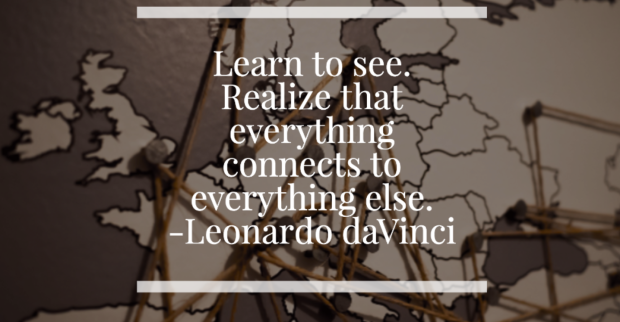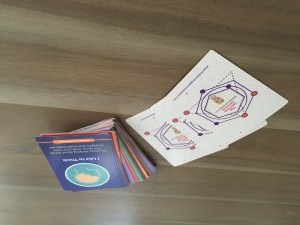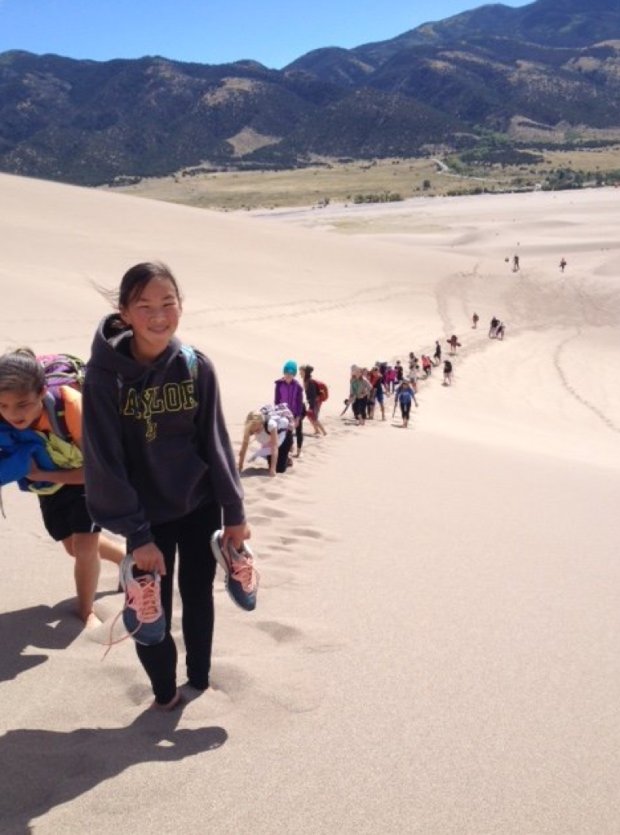There is this story, attributed to JFK’s grandfather, that as a boy, he and his friends would walk along a stone wall in Ireland on their way home from school and, as kids do, they dared him to climb over the wall. The wall was tall, formidable, and scary. He decided that the only way he could guarantee completing this challenge was to throw his hat over the wall so that he would have no choice but to go after it. The hat was part of his school uniform, and he couldn’t go home without it.
We are in a throw your hat over the wall moment.
The COVID-19 pandemic has reminded us that we are all capable of massive change in the short term. Nearly overnight, we went from our usual way of life, to teaching and learning online, working from home, social distancing, wearing masks in public, grocery shopping differently, and adapting to a new way of life. Eight weeks into this pandemic and we see that we are capable of really significant pivots.
So often in education, I hear how resistant some educators are to change. If this moment is teaching us anything, it’s that we are capable of throwing our hat over the wall. Teachers all over the world have done this. How can we capitalize on this moment? How can we define a new normal with new priorities? How can we involve students in the re-imagination?
What we choose to do next matters, we can double down on our efforts to keep the broken status quo, or we can use the opportunity to re-imagine our system.
Who and what will we choose to support? Kids, families, and teachers? Or curriculum companies, tests, and bureaucracies?
There’s nothing sacred about spelling tests as a way to learn spelling, flash cards to learn math facts, curriculum as a way to teach, testing as a way to collect data. There’s nothing sacred about most of what we do every day in education, and yet we hold tightly to these institutions as we make decisions about what school will look like. These constructs have been put into place to accomplish certain goals; namely to get kids to pass a test, have a certain GPA, and go to college.
When we consider how to do education better, how to make it more equitable, more meaningful, we often do so from the vantage point of old constructs.
As if they are sacred.
As if they are worth preserving.
This is an opportunity to engage in design thinking that will forever transform our schools. Where does this design thinking begin? With empathy. With what is actually sacred: the students.
This moment in time has reminded me how essential this step is (unfortunately, it’s one we regularly leapfrog in education). Who are our students as individuals? Who are their families?
When we refocus our organizing principals around the actual students in our care, when we begin from a place of empathy we can anticipate meaningful changes in our education system. Post pandemic I hope that education doesn’t look the same. I hope that we have taken a step back and hung question marks on the things we take for granted.
What might starting with the student (empathy) look like?
*Class sizes will be smaller. Part of this will be out of health necessity, but I hope the bigger driver of this decision is that we’ve considered the individual student first. With small class sizes, we can offer dynamic, student-focused learning that is tailored to the learner rather than the static curriculum currently being spoon-fed.
*Curriculum will be dynamic and living. We’ll focus less on what content has been covered and focus more on critical thinking, problem solving, discernment, research, and creative expression. Curriculum will meet students where they are rather than demand everyone be in the same place.
*We’ll step away from siloed subjects and engage students in inquiry. We’ll consider that students live in a world that’s subjectless and ask that learning be immersive. We’ll recognize that financial literacy, digital literacy, and statistical literacy are vital.
*We’ll remember that learning is so much bigger and more beautiful than the meaningless data battles we’ve insisted on in the past. What was one of the first things to go amid pandemic? Standardized testing. Students will be better off as a result. Learning isn’t about the data we collect, or how much content was memorized. Learning is immersive and relational. Assessment practices will be for the student. We’ll return to the Greek root of the word assessment (asidere) to sit beside. Assessment will be used to guide learning and as a way for students to self reflect.
*I’ve seen many politicians, parents, and educators voice concerns about students being behind in learning as a result of the pandemic. Should they repeat the grade level? What will we do to catch them up? The pandemic is shining a light on a problem that’s been true the whole time. Students have ALWAYS developed at different rates and in their own time. Nothing about this moment is actually unusual. What is different is that we have a spotlight on the inherent flaws in our systemized one-size-fits-all approach to education that promotes kids to the next level because of their age. What a wonderful opportunity to completely lose grade levels as a way of advancement and instead, let every student advance as they are developmentally ready. How do we organize classrooms? Based on social/emotional maturation. Who is their peer group? Who can they be vulnerable in learning with?
* We are being reminded that social-emotional literacy isn’t something to tack on to school policies or a curriculum, rather it’s the life force within the system. After physical needs are met, emotional needs are very next in the pyramid that makes it possible to learn. When students come back to the classroom, we will be met with complex emotions and unique forms of trauma. We’ll find ourselves in charge of these wonderful, fearful, joyful, exuberant, grief-stricken, complicated, anxious, lovely, overwhelmed children. This has always been the case but, I suspect as we return to school, we are going to be met with the complexity that all of these emotions can exist simultaneously. We’ll be more acutely aware of them. Kids and families will be looking to educators for help, stability, and understanding. How will we meet them? How will we commit to navigating this together? We need to know our students (empathy) and their families well so that we can meet their unique needs. Educators know it’s never been about just teaching kids. As educators we are connected to every single part of society. How families eat, work, access heath care, are supported in mental health, the jobs they hold. All of humanity intersects in the classroom and it impacts how we do what we do in the classroom. This pandemic has given us more awareness of this reality than ever before as educators scramble to fill the gaps that society generally overlooks because “someone” is taking care of it. The way that this crisis impacts society is going to impact our classrooms and the learning available on any given day as we navigate base physical and emotional needs that haven’t been met. The only reasonable response is to begin with empathy. We will need to be stronger advocates than ever before and we’ll have to consider the whole child in every decision made.
Here’s to throwing our hat over the wall. Here’s to remembering who is sacred in education and designing around them.










